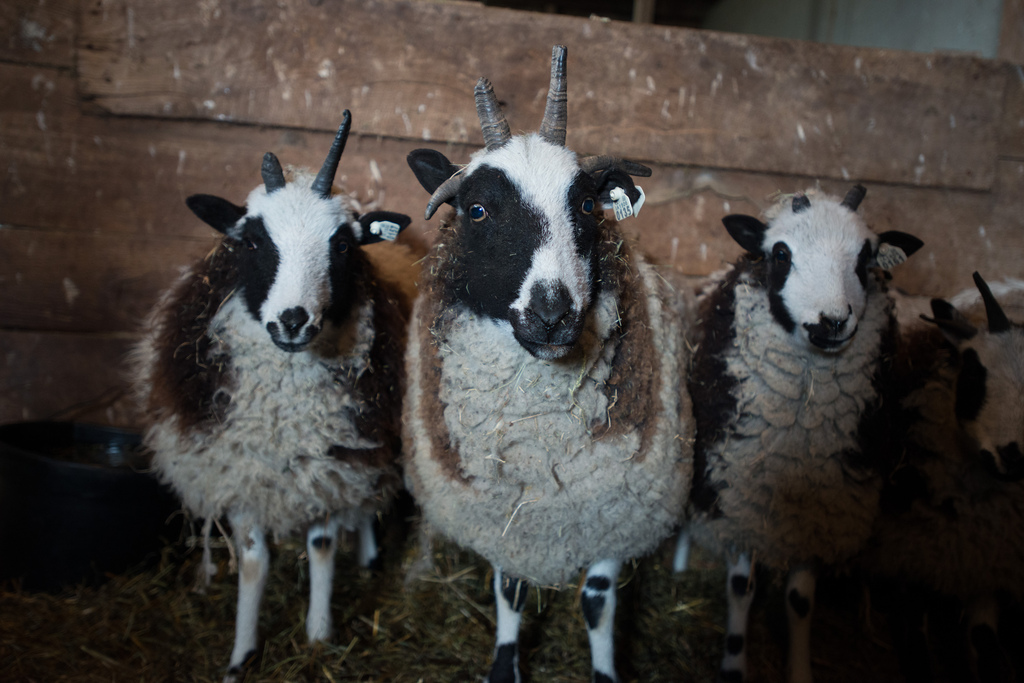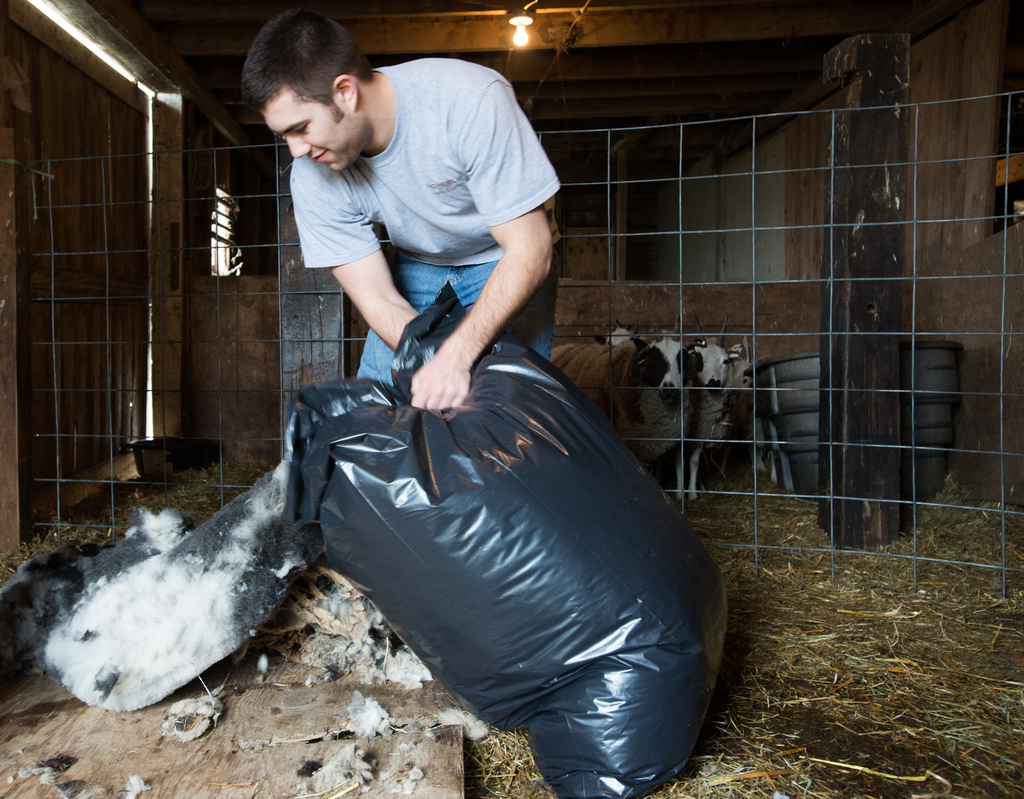Working the wool

By Joseph L. Murphy
The buzz of the steel clippers echoed across the farm and could be heard 50 yards away. Passing through several gates and into the pasture 10 sheep grazed on hay near a small white barn while basking in the warm spring sun. The sheep had recently lost pounds of warm wool.
Inside the barn Ronnie Cloyed, Blakesburg, worked efficiently, methodically shearing sheep one at a time on a piece of plywood surrounded by hay and stray wool. “It’s hard work but but I’ve learned over the years. When I was younger I would do 120 a day” Cloyed said while wiping the sweat from his brow. “After 30 years of practice I’ve got it down to a science.”
Cloyed has been shearing sheep since the early 80’s when he had to seek off-farm income due to the heightening farm crisis that had Iowa in its grips.
“Shearing sheep has been a great way to meet people,” Cloyed said. “I’ve traveled all over and met people I wouldn’t have otherwise. I still like the money the best though.”
Now 30 years later he still enjoys the work. Often his only audience are the sheep waiting their turn to shed their warm blanket of wool and get back to what they do best, graze on spring hay on one of four pastures Ethan Brinegar, St. Paul Minn., has made for them at the rural Moulton farm where he grew up.
After the wool was sheared Brinegar scooped it into a garbage bag and placed it in the corner of the barn. When they were done with the shearing, the bags were taken to a local wool buyer where it will be washed and cleaned and hand spun into yarn so knitters and crafters can create their favorite garments.
He bought his first Jacob Sheep ewe and lamb in 2001. He recalls researching the unique breed that trace their origins to what is now Syria some three thousand years ago . He liked the horned sheep so much that he began showing them at his county fair and since that time his flock has grown to 43 with 4 more ewes yet to deliver. For the past five years he has provided lambs to 4-H students to show at their county fairs and has even sold several to people as far away as Pennsylvania.
Sharon Hopkins-Brinegar, Ethan’s mother, also enjoys having the sheep at the farm. Sharon, a nurse practitioner at Lucas County Health Center in Chariton, said it is always entertaining watching them and she doesn’t mind helping out with the chores.
“When the lambs are born it’s like opening a Christmas present as you never know what to expect,” Sharon said about the multiple numbers of horns and different color patterns the sheep can have. “We now have 3 sets of triplets. Since we have never had triplets before, this year is pretty phenomenal.”
After the last ram is sheared and moved to the pasture Cloyed wipes his brow for the final time and packs away his clippers. Another day of shearing completed and all that is left is the wool and yarns to be.
Originally published for the Iowa Soybean Association. Find more great stories at: www.iasoybeans.com/news
For more than two decades, Joseph L. Murphy has had the pleasure of meeting and connecting with people from all walks of life through photography. He has photographed presidents and heads of state, traversed the winding alleyways of the Fes Medina in Morocco, photographed the sprawling countryside and people that make up Argentina and covered events that have defined the U.S. Most recently, Murphy’s travels have taken him to Cambodia, Mexico, China, Vietnam and Ecuador.
He has spent the past 20 years specializing in agriculture photography for multiple organizations, publications and marketing projects.
A graduate of the University of Iowa, Murphy determined at an early age that his love of photography would shape his vision for life.


